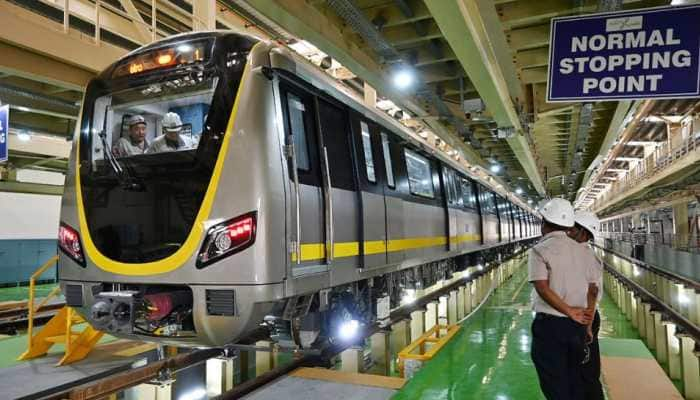Multiple electric scooter fire incidents reported in India, govt orders investigation - Explained
India's transport ministry has initiated an investigation in both Ola and Okinawa cases as experts blame 'Thermal Runaway' for fire incidences in electric vehicles
- An Ola Electric scooter caught fire in Pune
- Another fire incidence involving Okinawa scooter reported from TN
- Transport Ministry has initiated an investigation in both cases
Trending Photos
) Image for representation
Image for representation Update: Another fire incident has been reported in Chennai, this time involving an electric scooter made by Pure Electric. This is the third such incidence in four days.
Two fire incidences involving India’s top electric vehicle makers have rocked the EV fraternity in the country along with the prospective electric scooter buyers prompting the Transport Ministry to investigate the matter. The Ministry has written letters to the Centre for Fire Explosive & Environment Safety, Ola Electric and Okinawa Scooters to conduct a thorough investigation of both the incidences.
In the first incident, a new Ola S1 Pro electric scooter caught fire while parked at the side of the road. The video made the rounds of the internet showing smoke coming out of the battery compartment that later converted into a massive fire. Luckily, no one was hurt in the fire. Ola said they are investigating the matter.
Also read: Ola electric scooter catches fire in Pune, investigation ordered
In another incident, an Okinawa electric scooter, whose model is unknown, caught fire in Tamil Nadu killing father and daughter. The Indian scooter maker blamed the user for negligence while charging the scooter. "Our heartfelt condolences to the family. As per credible sources, the media, and the local authorities, it is an evident case of short circuit due to negligence in charging the vehicle. We will wait for the complete investigation to unfold,” said the Indian company in a statement.
While this is the first such incidence involving the Ola scooter, this is the second fire incident involving Okinawa. In October 2021, a video of a charred Okinawa electric made rounds on the net and nobody was reported injured at that time. Both the incidences are under investigation, however, in the Okinawa’s case, local police says that an electric short circuit due to faulty switch is responsible for the fire.
Ola Electric scooter catches fire on Pune. Reason unknown.
Credits: Electric Bike Wale. #OlaScooter #ola #olaelectric #motowagon #electricscooter pic.twitter.com/Zai55EnFZo — MotoWagon (@motowagon360) March 26, 2022
In Ola’s case, though, the fumes coming out of scooter clearly highlight battery malfunction and triggers the debate on battery safety in electric vehicles. It’s not that only Indian makers are at fault here. Multiple reports from the US and China have highlighted fire in Tesla vehicles, however, no concrete results have been found till now.
Experts are blaming Thermal Runaway in lithium-ion batteries causing such tragic incidences. Not only does a thermal runaway causes fire in electric vehicles, it’s equally hard to extinguish.
What is Thermal Runaway?
In a layman’s term, a thermal runaway is an incident where an exothermal process triggers other processes, resulting in an increase in temperature and hence fire in the battery. Thermal runaway usually begins when the heat generated within a battery exceeds the amount of heat that is dissipated to its surroundings. In India, the weather can reach as high as 45 degrees and that can trigger a battery fire. Experts say that more and more batteries need to be produced locally and as per Indian environment to stop such incidences.
Dr Akshay Singhal, Co-Founder & CEO, Log9 Materials said, “It is very unfortunate to see the recent incidents of electric vehicles catching fire. These incidents sadly would become more common unless we develop ground up battery technologies suitable for Indian conditions and vehicle types, and the industry must take urgent note of this.”
Not only Thermal Runaway, the overall Battery Management System is at fault since most automakers used to import batteries from China, offering sub standard products to the market. However, things are quickly changing and India is developing almost 80 percent of its batteries in the country itself.
Also read: Delhi has emerged as the EV capital of India
"Incidents like this tend to occur because of battery technology's poor quality, specifically the BMS (Battery Management System). In addition, inadequate battery storage system monitoring and safety techniques can result in significant concerns such as battery overcharging, over-discharging, overheating, cell unbalancing, thermal runaway, and fire dangers. Importing BMS (Battery Management System), not specifically designed for Indian weather conditions, is prevalent in the two-wheeler EV space," said Vikrant Singh, Co-Founder and CTO, BatX Energies.
"Indian EV companies need to develop their own BMS according to Indian weather, temperature and road conditions to avoid such incidents. According to experts and battery makers, the sale of low-quality batteries unsuitable for Indian circumstances is likely to hamper the industry's advancement. A good and effective BMS extends the life of the battery cells in electric vehicles, making this an efficient mechanism for measuring and controlling the cell's voltage," he further added.
How to keep your vehicle safe?
While manufacturers are upping the game to make more India-specific vehicles, reducing the number of such incidences, the onus is also on consumers to not treat electric vehicles same as ICE-powered vehicles. Here are some do’s and don’ts if you are an EV owner –
Charge the vehicle only using chargers provided by the maker or by chargers recommended by EV maker
Don’t park your EV for long hours in direct sunlight
Read the vehicle booklet carefully as EVs are relatively new and it’s important to understand how your electric vehicle works
Use telematics and app provided by your EV maker to track the health of the battery
Be careful while charging, use expert’s help for the first time to understand the charging procedure
Use proper sockets and plugs for charging the EV
Humidity is an enemy of both chargers and batteries. Try parking the vehicle are dry places or with low humidity.
Stay informed on all the latest news, real-time breaking news updates, and follow all the important headlines in india news and world News on Zee News.
Live Tv







)
)
)
)
)
)
)
)
)
)
